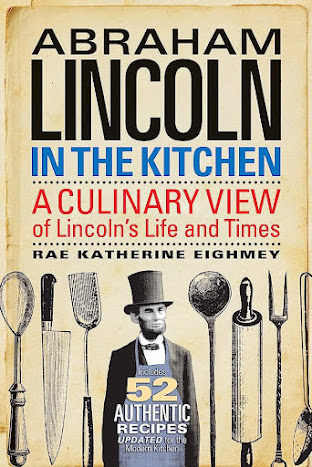Abraham Lincoln in the Kitchen, A Culinary View of Lincoln’s Life and Times
Rae Katherine Eighmey
The novelization of a key era must read like a story and stories include details about how the protagonists and antagonist lived. A writer can go overboard on food, lodging, transportation, clothing, etc. but a sprinkling of these details enlivens the narrative. Luckily, the description of ordinary people’s lives became an academic trend, and when I wrote Tempest at Dawn, I found countless books on the day to day life of our Revolutionary forebears. For some reason, descriptions of culture and daily routines are harder to find for the Civil War period. Actually, books about common soldiers are abundant, but I’m writing a novel about the politics of the war, not the battles.
Abraham Lincoln in the Kitchen helped fill the void. I’m not a
cook, so I merely scanned the fifty-five recipes, but these are surrounded by
excellent descriptions everyday life, especially food procurement, preparation,
and consumption. Each chapter covers a specific historical period and Eighmey
does a good job of sleuthing out how Lincoln lived and accurate period recipes.
I’m unqualified to review the recipes, but I have read enough period history to say that Eighmey did her homework, which gave me confidence to rely on her descriptions on mundane daily activities.
The subtitle, A Culinary View of Lincoln’s Life and Times, is more accurate than the main title, Abraham Lincoln in the Kitchen. Eighmey does list a couple of references of Abe helping out in the kitchen, but this did not appear to be frequent. Most historians say that Lincoln was disinterested in food and ate lightly. My greatest insight from this book is that this common wisdom is only partially true. Lincoln enjoyed being around people and he also enjoyed being the center of attention. Food is frequently prevalent when people gather, but telling stories without a mouthful hampers chowing down. In the right setting, it appears Lincoln had a healthy appetite, but when distracted by thoughts or an audience, he could neglect to fuel his body. Another insight is that Mary was much more of a homemaker than generally conveyed. Reading about their pre-presidential life made me think their marriage was stronger than I had previously assumed.

